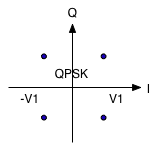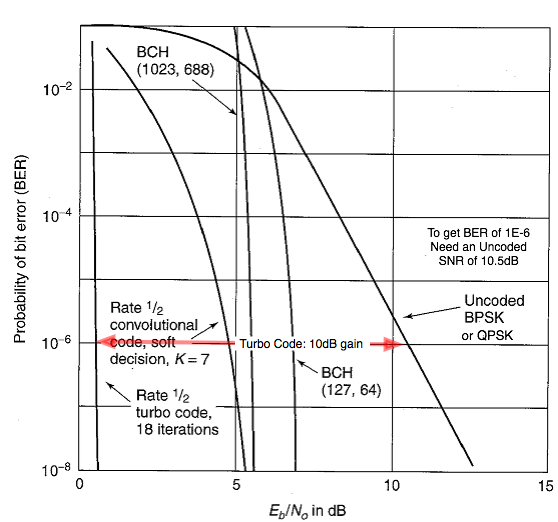 |
||||||||||||||
|
||||||||||||||
Communication Links |
||||||||||||||
|
The communication links can be divided four major calculations:
The requirements for these communication links places a constraint on the type of modulation scheme required for data transmission. Due to the number of users, data rate, and bandwidth a Direct Sequence Spread Spectrum (DSSS) modulation technique is used in all of these communication links. In addition to providing a large amount of noise rejection, DSSS is very spectrally efficient allowing multiple users access to the same frequency spectrum. In order to accomplish this, each terminal is assigned a specific code, or chipping sequence that is M bits long. Each of the data bits intended for the specific user is chipped with their specific code. This use of DSSS is usually called Code Division Multiple Access (CDMA). The actual modulation scheme that will be used is Quadrature Phase Shift keying (QPSK) which modulates the carrier signal with two data bits per symbol through the use of In phase and Quadrature channels. The signal constellation for this modulation can be seen in figure 2. Figure 2: pi/4 QPSK
This modulation scheme discussed in this section is used in all of the required links. The relevant information for this modulation scheme is summarized in Table 3. Table 3: Modulation Specifications
The required data rate is provided in the problem statement and in order to increase the robustness of the links, a turbo code error correction scheme was adopted. As shown in figure 2.5(ref[2]), the 'uncoded' SNR required for the link is approximately 10dB higher than the turbo coded link at a 1e-6 BER. The bandwidth required was determined by accounting for the required data rate, coding rate, and the spreading factor. The values calculated above can be found in the MATLAB file found here. Figure 2.5: BER vs SNR for different coding rates
|
||||||||||||||

